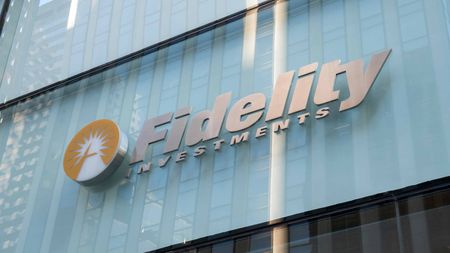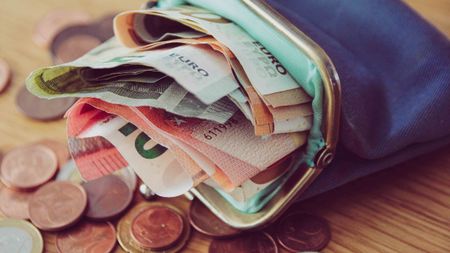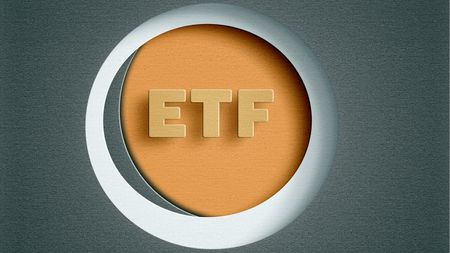A Growth Trifecta
By investing in stocks that pay dividends in foreign currencies, Matthews Asia Pacific Equity Income gives you three ways to win.
One way of assessing an investment is to count the ways you can win. If you buy a growth stock that pays no dividend, your profit potential is confined to a capital gain. If you purchase a dividend payer, your total return comes in the form of growth and dividend income. If you invest in dividend-paying stocks in foreign currencies that appreciate against the U.S. dollar, then you can win in three different ways (actually four if the dividend stream continues to grow).
Matthews Asia Pacific Equity Income (symbol MAPIX) has benefited from this investing trifecta. Over the past year through June 3, this unusual fund, which launched in October 2006, returned 8.5%. That put it in the top 1% of all diversified Asia Pacific funds, according to Morningstar. And, as befits a dividend growth fund, the gains have come with relatively low volatility.
Matthews International, headquartered in San Francisco, specializes in Asian markets: all nine of its funds are Asian-oriented. When investors think of Asia, with all of the continent's turbocharged economies, they think of growth investing. Matthews, which has been investing in Asia since 1991, thought the time was ripe for an income fund. The firm was correct.

Sign up for Kiplinger’s Free E-Newsletters
Profit and prosper with the best of expert advice on investing, taxes, retirement, personal finance and more - straight to your e-mail.
Profit and prosper with the best of expert advice - straight to your e-mail.
Take the case of Japan, where economic growth has decelerated sharply, the population is rapidly aging and ten-year government bonds, reflecting the sluggish economy, recently yielded a miserly 1.6%. That sounds like a nice backdrop for substantial increases in dividend payouts by Japanese companies -- which is happening. "Before 2004, dividend policies didn't exist in Japan," says Jesper Madsen, portfolio manager of Equity Income.
Now, Japanese companies are getting religious about paying dividends and increasing them. Japanese stocks now yield 2%, the same as the U.S. market. "Dividends are growing faster than earnings in Japan," says Madsen. "There's been a paradigm change."
As of April 30, the fund had 22% allocated to Japan, its largest weighting. For example, two of the top five holdings were Lawson, a leading convenience-store chain, and Sumitomo Trust & Banking. The Japanese economy has essentially stopped growing -- hence the willingness to retain less earnings and increase the distribution to shareholders.
Elsewhere in Asia, Madsen is finding high-yielders that are able to boost their dividends smartly. Matthews calculates that from 2002 through 2007 dividends in Asia Pacific compounded at 18% annualized, compared with just 6% for companies in Standard & Poors 500-stock index. Part of this disparity is the U.S. predilection for share buybacks, which are often of questionable merit. Share buybacks are almost unknown in Asia and barred in a number of countries.
Take the example of Taiwan Semiconductor Manufacturing Co. (TSM), the world's largest chip foundry and the fund's biggest holding. TSM yields 4%, which is most unlike a U.S. tech company. Overall, the fund's holdings tend toward domestic businesses such China Light & Power and Singapore Press Holdings. That's just as well since most of the Asian currencies in which revenues and profits are booked are steadily gaining in value against the ailing greenback.
Matthews Asia Pacific Equity Income requires a $2,500 initial minimum investment. The fund levies no sales charge. Its annual expense ratio of 1.39% compares favorably with the 1.56% average for all diversified Asia Pacific funds.
Get Kiplinger Today newsletter — free
Profit and prosper with the best of Kiplinger's advice on investing, taxes, retirement, personal finance and much more. Delivered daily. Enter your email in the box and click Sign Me Up.
Andrew Tanzer is an editorial consultant and investment writer. After working as a journalist for 25 years at magazines that included Forbes and Kiplinger’s Personal Finance, he served as a senior research analyst and investment writer at a leading New York-based financial advisor. Andrew currently writes for several large hedge and mutual funds, private wealth advisors, and a major bank. He earned a BA in East Asian Studies from Wesleyan University, an MS in Journalism from the Columbia Graduate School of Journalism, and holds both CFA and CFP® designations.
-
 Machine Learning in Finance: Real-World Applications and Challenges
Machine Learning in Finance: Real-World Applications and ChallengesControlling machine learning in a finance environment requires stakeholders' commitment to creating a strong ethical foundation.
By Clay Bethune Published
-
 How Caregivers for Adults Can Save on Taxes in 2025
How Caregivers for Adults Can Save on Taxes in 2025Tax Breaks Caring for your parent or spouse can be stressful, but the IRS offers tax breaks for qualifying taxpayers. Here they are.
By Kate Schubel Published
-
 The 5 Best Actively Managed Fidelity Funds to Buy Now
The 5 Best Actively Managed Fidelity Funds to Buy Nowmutual funds In a stock picker's market, it's sometimes best to leave the driving to the pros. These Fidelity funds provide investors solid active management at low costs.
By Kent Thune Last updated
-
 The 12 Best Bear Market ETFs to Buy Now
The 12 Best Bear Market ETFs to Buy NowETFs Investors who are fearful about the more uncertainty in the new year can find plenty of protection among these bear market ETFs.
By Kyle Woodley Published
-
 Don't Give Up on the Eurozone
Don't Give Up on the Eurozonemutual funds As Europe’s economy (and stock markets) wobble, Janus Henderson European Focus Fund (HFETX) keeps its footing with a focus on large Europe-based multinationals.
By Rivan V. Stinson Published
-
 Vanguard Global ESG Select Stock Profits from ESG Leaders
Vanguard Global ESG Select Stock Profits from ESG Leadersmutual funds Vanguard Global ESG Select Stock (VEIGX) favors firms with high standards for their businesses.
By Rivan V. Stinson Published
-
 Kip ETF 20: What's In, What's Out and Why
Kip ETF 20: What's In, What's Out and WhyKip ETF 20 The broad market has taken a major hit so far in 2022, sparking some tactical changes to Kiplinger's lineup of the best low-cost ETFs.
By Nellie S. Huang Published
-
 ETFs Are Now Mainstream. Here's Why They're So Appealing.
ETFs Are Now Mainstream. Here's Why They're So Appealing.Investing for Income ETFs offer investors broad diversification to their portfolios and at low costs to boot.
By Nellie S. Huang Published
-
 Do You Have Gun Stocks in Your Funds?
Do You Have Gun Stocks in Your Funds?ESG Investors looking to make changes amid gun violence can easily divest from gun stocks ... though it's trickier if they own them through funds.
By Ellen Kennedy Published
-
 How to Choose a Mutual Fund
How to Choose a Mutual Fundmutual funds Investors wanting to build a portfolio will have no shortage of mutual funds at their disposal. And that's one of the biggest problems in choosing just one or two.
By Coryanne Hicks Published